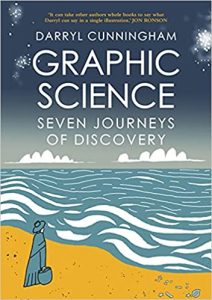
Synopsis
Graphic science presents biographies of Antoine Lavoisier, Mary Anning, George Washington Carver, Nikola Tesla, Alfred Wegener, Jocelyn Bell Burnell, and Fred Hoye. The idea here is to show how science developed over 200 years by focusing on these seven lives. The books shows them in their social, cultural, and Political contexts to highlight the way science contends with societal response to theories and discoveries. It is a fairly good graphic novel, though it does not make as much use of moment-to-moment transitions as it might and sometimes seems to function more like an illustrated picture book, just with lots of panels. The light this book shines on the lives of scientists with who many students might not be familiar is admirable. It takes a rather fatalistic view of the relationship between science and religion, however, saying, for example in the biography of paleontologist Mary Anning that her era (the 1830s) was “…the last era in which religious belief and science would be compatible.” There remain, in the 21st century, many Christian biologist, physicists, researchers, chemists, paleontologists, and so on, who would take great issue with this statement. Having said all that, it is a fascinating book and well worth a read.
Why should I read this book?
The biographies themselves are quite compelling, and this book would make a great supplemental text in any science course in high school.
Who is this book best for?
While I could imagine excellent middle school readers getting a lot out of this book, it seems best suited for high school readers.
Challenge Rating: No Challenge
Heads up: Buying via our links may result in us getting a commission. Also, we take your privacy rights seriously. Head here to learn more.

